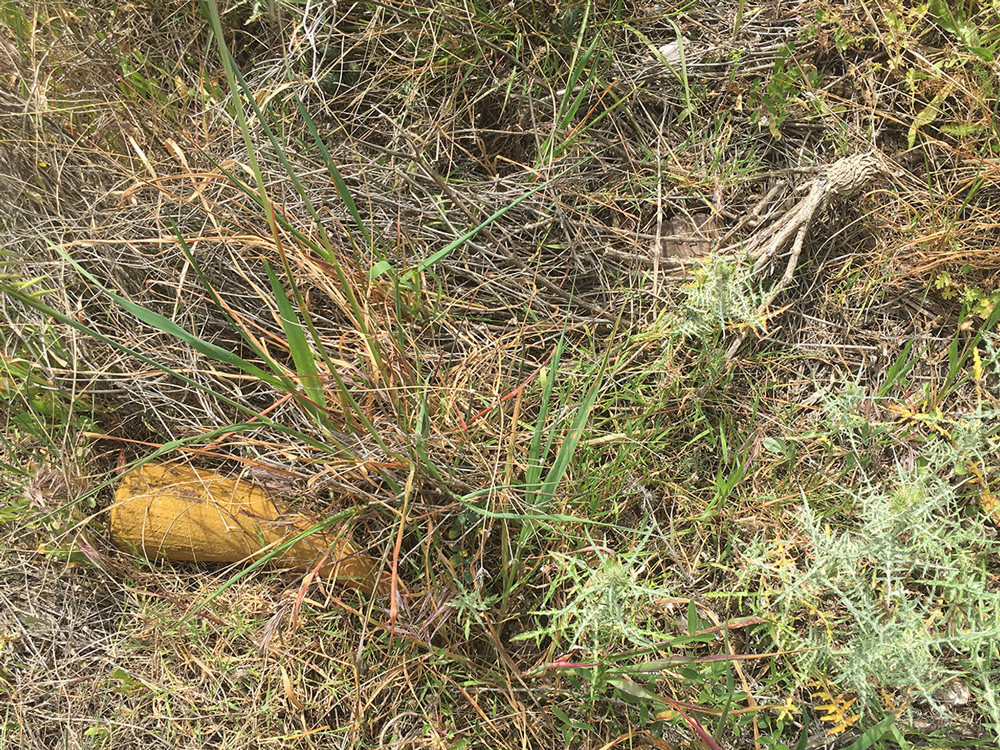The abandoned industrial site of Carrière du Bestouan was once the source of "stone of Cassis", a sought-after architectural limestone used to build the quays of major Mediterranean ports.
The Urgonian limestone rocks of the Bestouan quarry originated approximately 110 -130 million years ago in the shallow seas and reefs of the Lower Cretaceous Period. The reefs were formed by the carbonate shells of bivalve rudist mollusk species that grew in a wide variety of body architectures: vertical cones and columns, horn-like crescents, flat domes and upright fins. Ammonites - squid-like mollusks with ribbed, spiral shells, were also common.
Among the architectural ruins of the quarry site, fragmented artifacts of weathered urethane can be found that bear an uncanny resemblance to 100 million year old rudist and ammonite fossil forms.
Ammonite fossil fragment genus Neancycloceras
Bestouan site artifact
Rudist fossils - genus Hippurites
Bestouan urethane site artifacts
Large blocks of weathered urethane found on the site suggest the "psuedofossil" artifacts found at Carrière du Bestouan are likely broken remains of molded, life-size animal statues - possibly used as children's toys, wall mount trophies, or event props by former occupants of the abandoned quarry. Ironically, the urethane bodies of these sculpted forms are derived from petroleum, itself a fossilized residue of ancient marine algae and zooplankton.
In our current Anthropocene geohistorical period, the ecology of the human imagination increasingly rivals traditional physical and biological factors in shaping both perception of landscape and the physical geomorphology of the terrain. No longer functional as a quarry, Carrière du Bestouan gains a new functionality as a theater of the geoimaginary, where images of extinct prehistoric life from the scientific imagination mix with pop culture simulations of contemporary animal life in a landscape radically altered by the economic imagination of the 19th and 20th centuries.




















